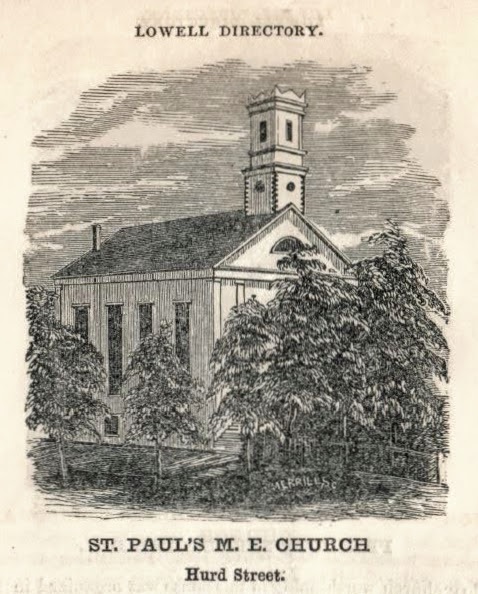Here, at UTEC, previously St. Paul’s United Methodist Church, African survivors of the slave ship Amistad spoke about their revolt. In 1839, they had revolted against the slaveholders, and were subsequently brought to court on charges of murder and piracy. John Levy, a Black abolitionist and barber in Lowell, brought the survivors to speak at this church in front of 1,500 people in 1841. This was part of a tour to compensate those who helped with their legal defense. The African survivors eventually won their court case and were released from the charges.
More of the Story
On July 2, 1839, enslaved Africans rose up and seized the ship Amistad while being transported between ports in Cuba, after having been kidnapped and sold into slavery in Sierra Leone. Sengbe Pieh, a Mende man also known as Cinque, was their central leader. The captured crew was instructed to sail back to Africa, but they instead steered along the US coast, eventually dropping anchor off Long Island, NY.
Some of the Africans went ashore for water, and the ship USS Washington took custody of the Amistad. The captain took the rebels to New London, CT, and claimed the people as salvage. Spain demanded the return of the Africans to Cuba, but abolitionists mounted a spirited defense of the rebels.
Many abolitionists sided with the Africans and raised money for their cause. The Spanish government demanded that President Martin Van Buren turn over the prisoners without a trial. Their case went to the United States Supreme Court, defended by former President, John Quincy Adams from Massachusetts. In a 7-1 decision, the Supreme Court ruled that the captive Africans were illegally taken from Africa and were now free. The Amistad Africans then travel throughout New England raising funds to finance their return to Africa.
Excerpt: “Visit to the United States in 1841” by Joseph Sturge
“On Monday we proceeded to Haverhill… After a stay of two hours, we proceeded to Lowell. The heavy rain prevented a general attendance. Only thirty-one dollars was collected, beside some private donations. Mr. John Levi (ed: Levy), a colored citizen, rendered important services to us, and several of the clergymen and other inhabitants rendered efficient aid.
On Tuesday we went to Nashua, N.H., and remained two hours… In the evening at Lowell, the large Methodist Church, St. Paul’s, was crowded, one thousand five hundred people being present, it was said, and many hundreds unable to get admission. (ed: 1840 Lowell’s Population was 22,000). The meeting was opened with an appropriate prayer by Rev. Luther Lee. In order to give an opportunity to the audience to see and hear Cinque, he was invited into the pulpit, where he made an energetic address. One hundred and six dollars were collected.
At the close of the services, nearly the whole congregation came forward and took the Mendians by the hand, with kind words and many presents. The ministers of all denominations attended the meeting, with many of the most respectable citizens.
During the day the Africans were invited to visit the ‘Boott Corporation,’ and were conducted over the whole establishment (cotton mills,) by the agent, Mr. French. As might be supposed, they were astonished beyond measure. After inspecting the machinery, the fabrics, and the great wheel, one of them turned to me and said, ‘Did man make this?’ On receiving a reply, he said, ‘He no live now–he live a great while ago.’
Afterwards they visited the carpet factory (ed: Royal Southwick, agent) and expressed great delight at the beauty and excellence of the carpets and rugs. Cinque wished to purchase a miniature hearth rug, but the agent allowed him to select one of the large and beautiful rugs to take to Mendi, which he generously presented to him. The workmen here–chiefly Englishmen–made a collection of fifty-eight dollars and fifty cents on the spot and presented it to the Mendi Fund.”
The owners of the ship and the Spanish government claimed the Mende, but the US had banned the African trade and argued that the Mende were legally free. Known as United States v. The Amistad (1841), the case was remarkably decided by the Supreme Court (7-1) in favor of restoring their freedom.
It became a symbol in the United States in the movement to abolish slavery. John Quincy Adams argued for their freedom before the SC. After the court case, thirty-five survivors returned to Africa in 1842, aided by funds raised by the United Missionary Society, a black group founded by James W.C. Pennington, a Congregational minister and fugitive himself in Brooklyn, New York who was active in the abolitionist movement.
St. Paul’s Methodist Church is now the space UTEC calls home.
(Thanks UMass Lowell History Department)

